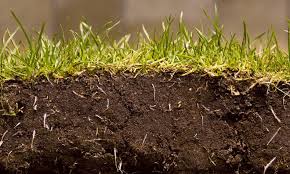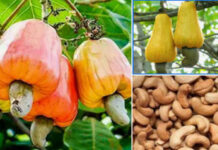Food production doesn’t have to be a victim of climate change. New research from Michigan State University suggests that crop yields and the global food supply chain can be preserved by harnessing the critical, and often overlooked, a partner in food supply—soil.
The research, led by MSU Foundation Professor Bruno Basso and published in Agriculture and Environmental Letters, is the first of its kind to provide critical insight into the importance of soil in managing risks associated with climate change.
“The long-term sustainability of agricultural systems strongly depends on how we use soil,” Basso said. “This research proves that with the application of innovation through better soil management, we’re one step closer to preserving our food supply and mitigating the effect that climate change and global warming have on our lives.”
By learning how to scientifically harness, protect and improve soil’s health, Basso’s findings prove that crop yields can continue at current production levels or even improve—especially if coupled with adaptive farming practices.
“Up until now, research hasn’t accounted for what soil gives back to the cycle of climate change, and it is arguably the most critical resource to adapt to mitigate its effects,” Basso said. “Ultimately, the soil is the ‘home’ of the plants. If we aren’t caring for the soil, plants and crops are unsheltered and left to deal with climate change on their own.”
Basso’s research was part of the Agricultural Model Intercomparing and Improvement Project, or AgMIP, a global initiative linking climate, crop, and economic modeling communities to assess the fate of food production under climate change.
Basso spearheaded AgMIP’s soil initiative and proposed that moving forward, soil be positioned as the center of the food production cycle.
“We went into the project knowing that with climate getting hotter, crop yields are forecasted to be lower. If the yield goes down, it also means that the amount of carbon that is returned to soil also goes down, so the question we had was: ‘if this cycle continues, where do we end up, and what role will soil have? And, will we be worse off if we don’t look after soil?’ So we ran crop and soil models to simulate the impact of weather on a crop yield and soil organic carbon to evaluate the feedbacks from soil to climate change,” Basso said.
Basso executed a series of models in Tanzania, Brazil, Argentina, the Netherlands, France, the United States, and Australia to test soil’s reactions to changes in temperature and carbon dioxide levels by analyzing soil organic carbon and nitrogen levels.
What the researchers found was that carbon dioxide compensated for the climate-caused yield losses because it acted as a natural fertilizer to help the crops grow. But when soil organic carbon losses were included in the analysis, the increased carbon dioxide in the atmosphere was not sufficient to prevent yield losses.
“So, through agronomic management, which is ‘doing the right thing at the right time for your crops,’ soil quality and health can be improved,” Basso said.
Basso explained how farmers can practice better agronomic management to protect soil against the effects of climate change. This should include the use of cover crops, conservation tillage, adding organic carbon to the soil, or increasing yields through advanced genetics and agronomy.
The forward-thinking approach to crop management—and our global food supply—is largely grounded at the root of plants’ life cycle in the soil they’re planted.
“The approach of accounting for soil’s feedback needs to become a rule when we use crop models when we want to identify adaptation strategies,” Basso said. “The soil that we’ll deal with in 2050 is sure to be different than it is now, so recognizing how to manage it today -along with adaptation strategies for tomorrow—is critical.”Basso’s research was funded by the National Institute of Food and Agriculture of the United States Department of Agriculture, and by the Department of International Development of the UK.








